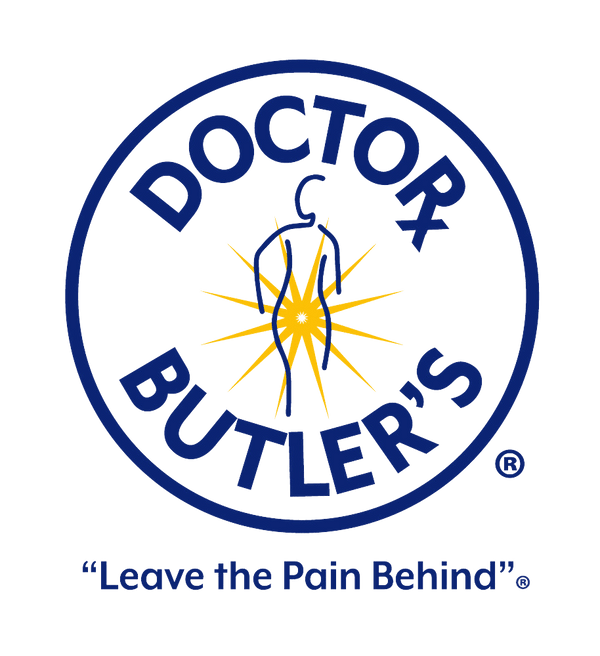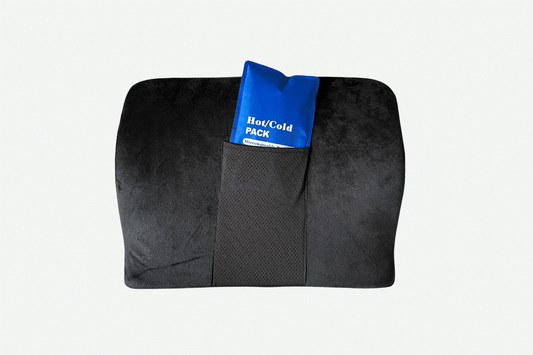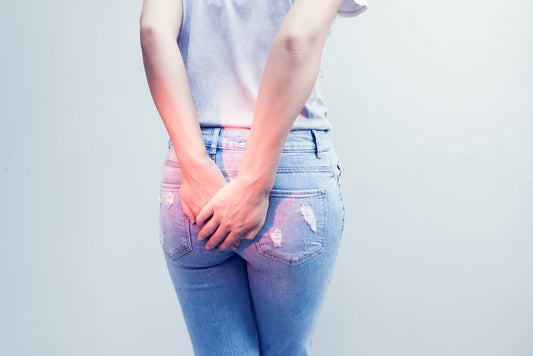The Stages & Signs a Fissure is Healing
Robert Cutler, D.O., FAOCPrShare
An anal fissure refers to cuts or tears in the skin that lines the opening of the anus. The wound is typically small in size but can cause a significant amount of pain as the fissure is healing. Learning to identify a fissure and the different stages of fissure healing helps prevent misdiagnosis and more significant complications. Implementing a healthy anal fissure self-care routine encourages the success of at-home treatment.
Anal Fissures: An Overview
We’ve written a lot about fissures already, so if you need some specific info on:
- What Causes Anal Fissures
- Distinguishing Anal Fissures and Hemorrhoids
- Understanding and Identifying Anal Fissures
…then just click one of the above resources! A summary of each post is below as well.
What causes anal fissures? Anal fissures are the result of trauma to the anal canal, primarily caused by passing large or hard stools due to constipation. Trauma can also occur as a result of irritation from diarrhea, anorectal surgery or a number of digestive conditions. For a full picture of what causes anal fissures, click the link to our article: https://doctorbutlers.com/blog/what-causes-anal-fissures/
How can you distinguish between anal fissures and hemorrhoids? It is important to understand and identify symptoms specific to anal fissures, as they are often confused for hemorrhoids. Just as with hemorrhoids, bleeding is common, and bright red blood may be seen on toilet paper, dripping into the toilet bowl or even mixed with stool. Read our article on distinguishing anal fissures and hemorrhoids to better understand how to identify each of these disorders: https://doctorbutlers.com/blog/distinguishing-anal-fissures-and-hemorrhoids/
How do you identify a fissure? Anal fissures are distinct for the level of pain associated with defecation. Patients often describe a sharp or tear-like throbbing both during and for many minutes following a bowel movement. If you are experiencing these symptoms, a self-examination can usually reveal the presence of a linear or oval-shaped laceration on the opening of the anus. Read this article on understanding and identifying anal fissures to learn more.
The Healing Stages of a Fissure
As with any skin fissure, anal fissures do not heal overnight. But they do follow three recognizable stages of healing . Familiarizing yourself with the different stages of anal fissure healing will help you differentiate between an acute vs. chronic fissure and indicate when it may be time to seek advice from a physician.
Here are the three stages:
- Inflammation Phase
- Proliferative Phase
- Maturation Phase
Read about each stage now.
Inflammation Phase
Inflammation occurs within the first 24 hours after a fissure has formed and can last for up to two weeks. There are four characteristic signs of inflammation: redness, heat, swelling and pain. While the inflammation phase may be the most unpleasant physically, the swollen area around the fissure is a sign that cells promoting damage control are making their way to the wound site.
Proliferation Phase
The next phase is proliferation, in which the body repairs the tear with new tissue made up of collagen. You may notice the appearance of small bumps forming on the wound bed. This is granulation tissue filling in the fissure as a network of new blood vessels forms to pull the wound together. Fibroblasts help fuel this contraction of the skin, and the granulation tissue diminishes redness and swelling as the pain of the fissure should begin to recede.
Maturation Phase
The final phase of the healing process is maturation, or the remodeling stage. Cells that were initially present die out, and the thicker collagen of the proliferation phase is reorganized. It now reabsorbs water and aligns itself along tension lines, cross-linking its fibers to reduce scar thickness and strengthen the skin around the anal fissure. As the wound fully closes and forms a scar, itching and pain may be present but will continue to reduce over time as the fissure is healed.
Signs of a Healing Fissure
In addition to the healing stages of the fissure itself, there are other physical signs a fissure is healing that can help you identify whether your at-home treatment efforts are finding success:
- Decrease in pain during bowel movements or daily activities
- Reduction in bleeding
- Less discomfort or itching
- Improved appearance of the fissure site
Tips for Supporting Fissure Healing
Use our Advanced Formula on the skin of the anal canal and the fissure itself to protect from repeated trauma. To treat fissures with our Maximum Strength Formula (which contains a vasoconstrictor), insert ointment above the fissure but not beyond the anal canal which typically extends two inches into the anus.
In advanced fissure cases, a vasodilator (prescription only) which increases blood flow can be applied directly to the fissure in conjunction with our Advanced Formula ointment. Fissures may heal faster if an OTC antibiotic ointment is placed on a gauze pad and applied directly to the fissure. The gauze pad should be secured in place with a small piece of tape throughout the day and night. The rubbing action tends to help stimulate new tissue growth.
Wound care while fissures heal is different from your typical skin laceration, though it may feel familiar for anyone that’s suffered from hemorrhoids. Due to the location and the primary drivers behind anal fissures, much of healthy healing is a matter of keeping your digestive system regulated and your rectal area medicated and clean.
- Maintain good hygiene – A healing wound means taking extra precautions to ensure the anal opening stays clean. Avoid vigorous wiping, which may chafe the area and exacerbate the fissure. Refrain from using scented soaps or bath products in or following a shower, which may irritate or dry out the fissure. Make sure any wipes used to clean the area are non-toxic and chemical and scent-free.
- Use over-the-counter or prescribed medications – Constipation is a main culprit behind fissures, so if diet changes don’t work, laxatives can help soften stool and regulate bowel movements. Creams and ointments applied to the area can increase blood flow and encourage healing, numb the fissure site, discourage spasms, and reduce symptoms such as itching and swelling. Doctor Butler’s Maximum Strength Hemorrhoid and Fissure Ointment is a great place to start.
- Ensure a diet high in fiber – Fiber is the miracle worker of bowel movements. It retains water to soften hard stools and provides bulk and structure for loose stools, both of which can spell trouble when a fissure is healing. Eating foods that are rich in fiber (think fruits, vegetables and whole grains), as well as taking a fiber supplement can increase both your soluble and insoluble fiber, which helps speed up the movement of stool through the bowels.
- Stay hydrated – Just as fiber helps stool retain water, consuming fluids is essential for ensuring your digestive system absorbs nutrients and eliminates waste efficiently. When you’re dehydrated, your colon takes water from the waste, creating the hard and dry stools that can cause anal fissures and hemorrhoids.
- Use warm baths or sitz baths – A sitz bath is essential not only for keeping the area around the fissure clean, but helping to promote healing and muscle relaxation. Fill your bathtub (or use a sitz bath kit) with 3 to 4 inches of warm water, gently lower your perineum into the water and soak the area for 15 to 20 minutes. The water will increase blood flow to the fissure site and address numerous symptoms at once.
When to Seek Medical Help
A healed fissure will be obvious: it’ll feel like it was never there! So if you’re still feeling symptoms after routine OTC care, we recommend scheduling time with a doctor. It is important to seek medical attention when at-home treatments aren’t working or if the condition of the fissure significantly worsens.
A fissure that hasn’t healed in six weeks may mean a chronic fissure or that additional treatment is needed, which a doctor can determine from a rectal exam. Signs that your fissure isn’t healing can include severe pain, increased bleeding, infection (pus, additional redness, red streaks, increased scab size) or the development of an abscess.
Heal Your Fissures Faster With Doctor Butler’s
Anal fissures are never pleasant, but they don’t have to stop you in your tracks. Taking care of the tear site and supporting the process with medicated products that help address symptoms and encourage the fissure to heal will have you back to a pain-free behind in no time. Don’t forget, Doctor Butler’s is here with a helping hand for the pain that’s hardest to reach.
Medical Sources:
- Beaty JS, Shashidharan M. Anal Fissure. Clin Colon Rectal Surg. 2016 Mar;29(1):30-7. https://www.ncbi.nlm.nih.gov/pmc/articles/PMC4755763/
- Schultz GS, Chin GA, Moldawer L, et al. Principles of Wound Healing. In: Fitridge R, Thompson M, editors. Mechanisms of Vascular Disease: A Reference Book for Vascular Specialists [Internet]. Adelaide (AU): University of Adelaide Press; 2011. 23. https://www.ncbi.nlm.nih.gov/books/NBK534261/


